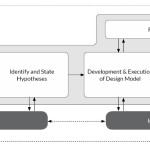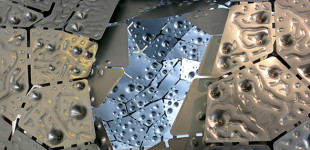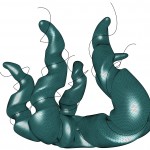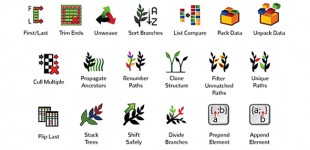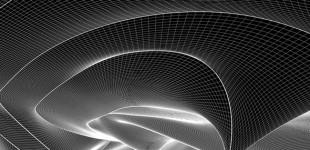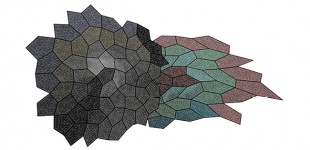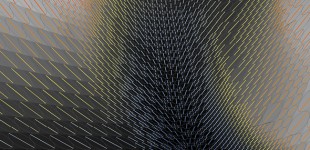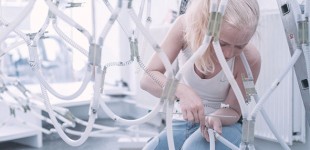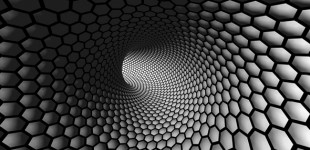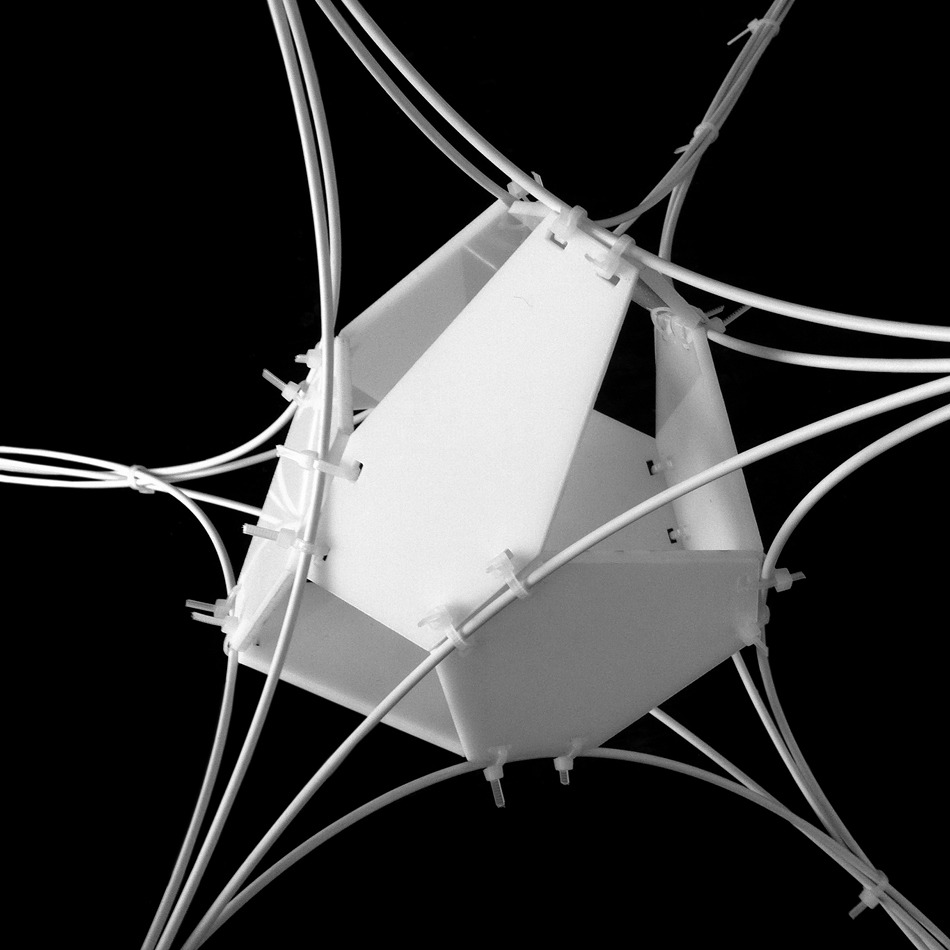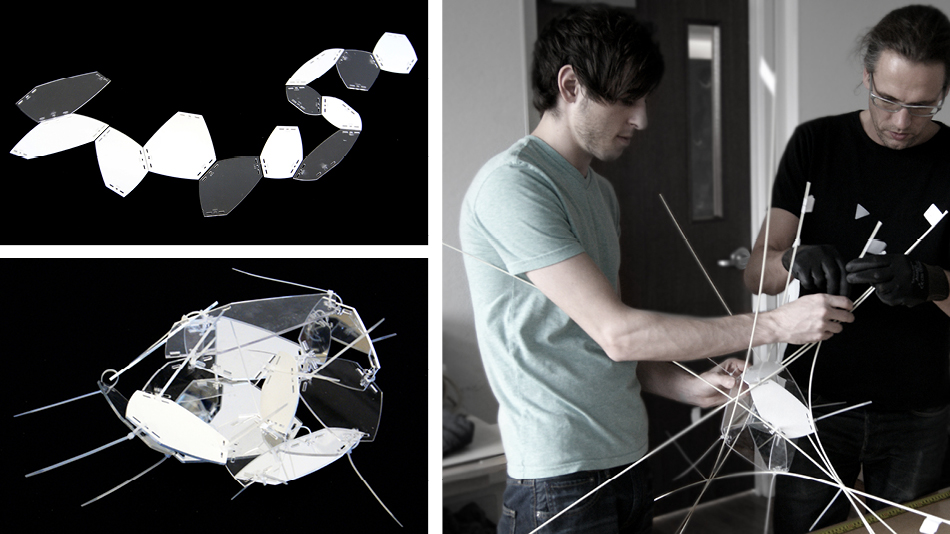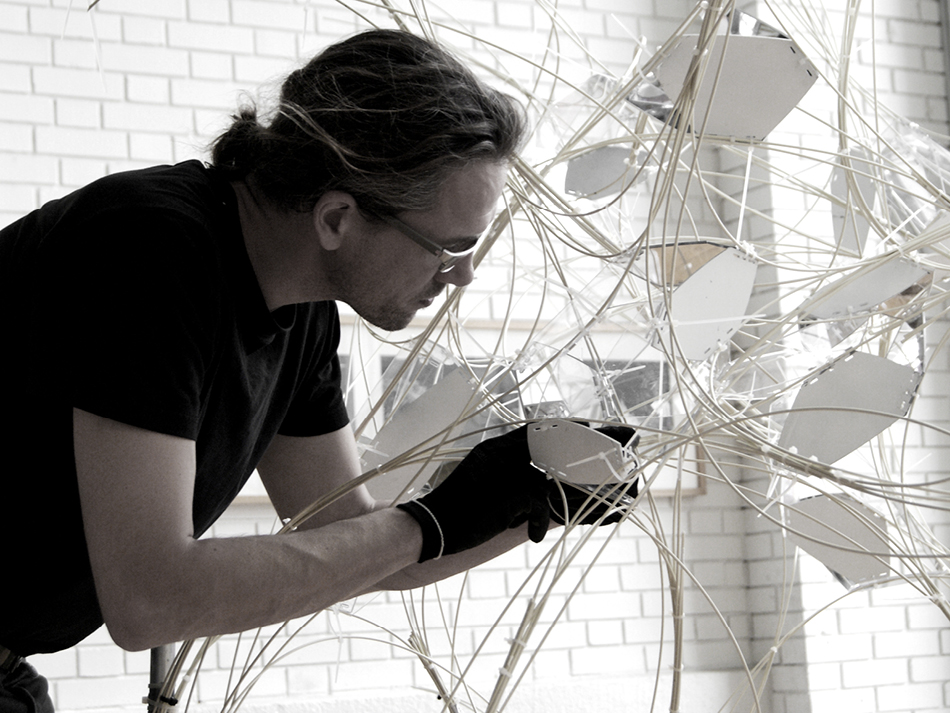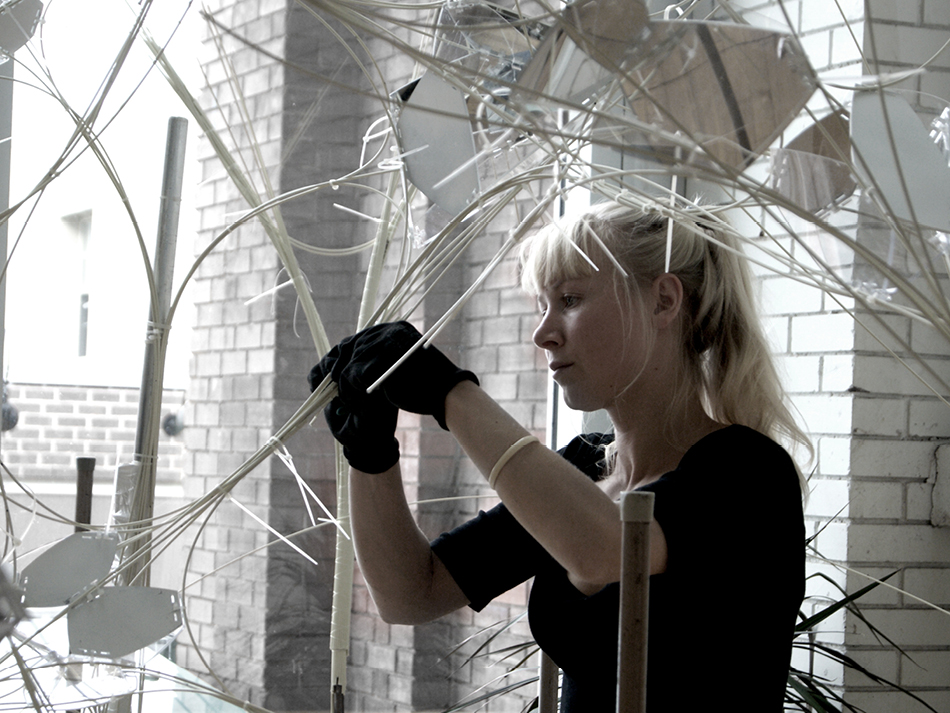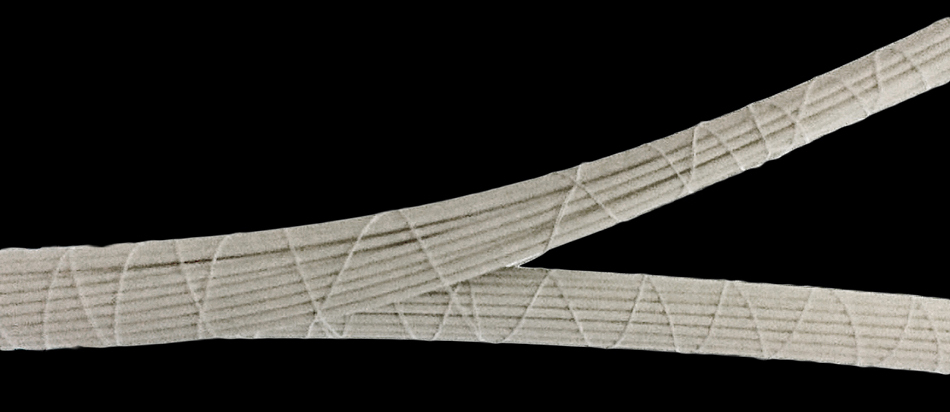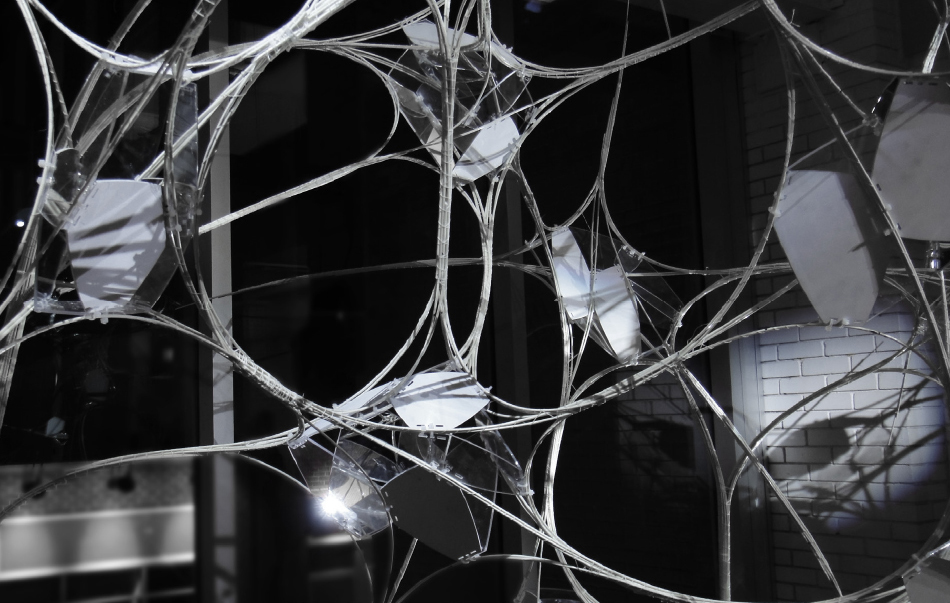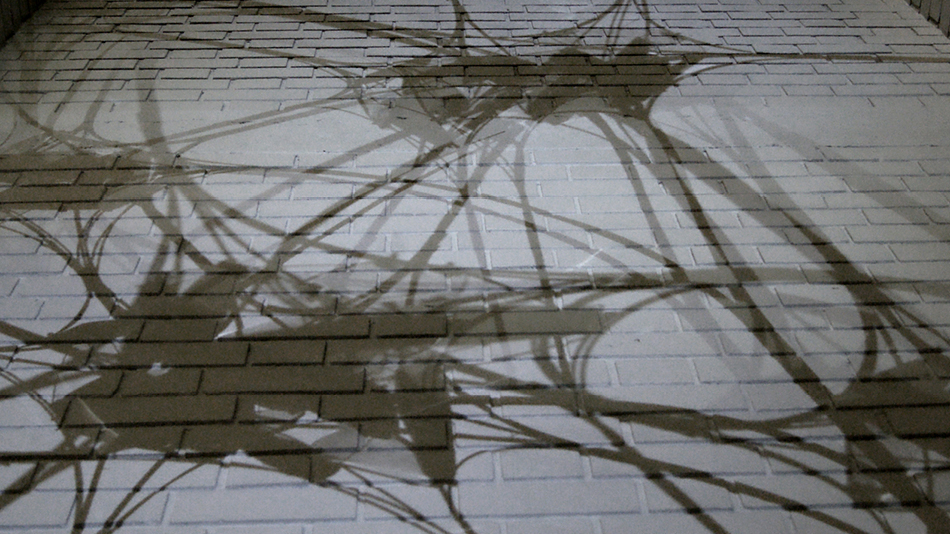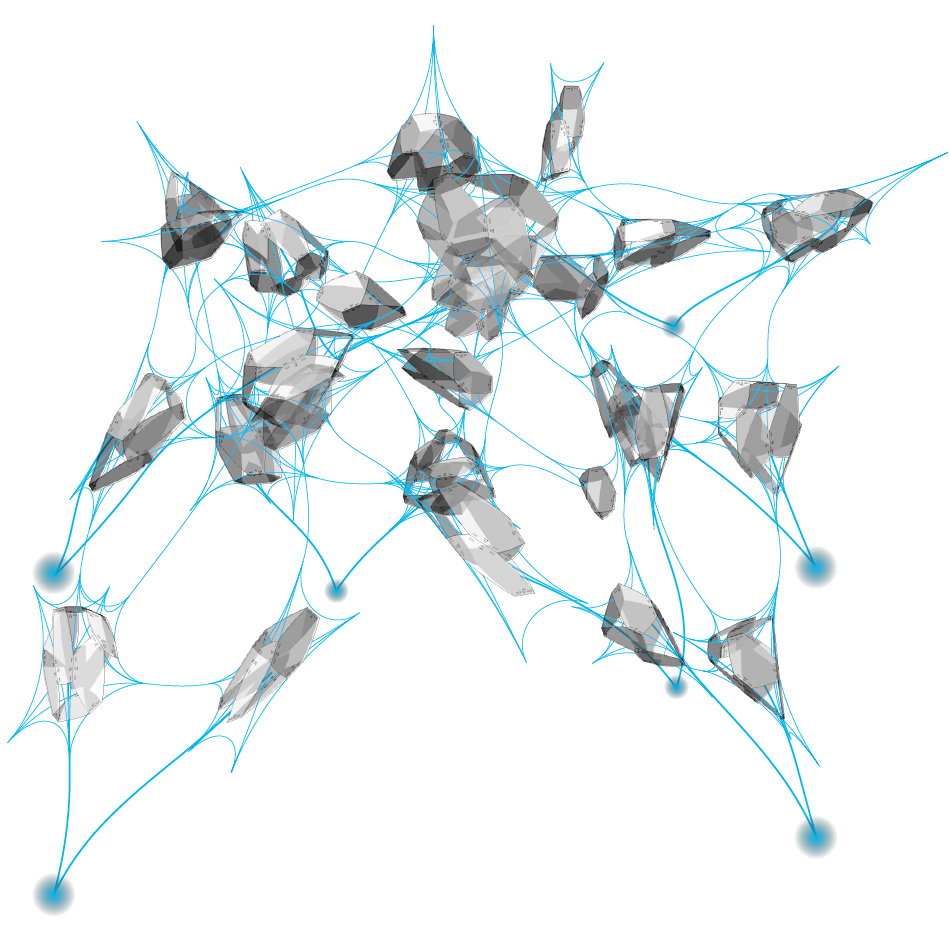bespoke geometry
The ACADIA Rise
CITA was invited to the ACADIA 2013 Conference in Cambridge Ontario to hold a design/build workshop. The workshop took its point of departure from CITA’s earlier project “the Rise” and further developed this research in the digital design and fabrication of aggregations of variably sized bundles of fibre material that multiply, bend, branch, and recombine in a distributed assembly that manifests an alternative to traditional structural systems, further exploring the conceptualization, technologies and making of an architecture that is continuously sensing and dynamically adapting to its environment as it grows into form. The workshop participants received insights into the algorithmic basis for the digital model, and both the CNC and physical processes of fabrication in a hands-on way.
For this phase of research, the focus was on exploring specifically adaptive systems. Here, adaptive systems are understood not only as geometrically variable assemblies, but more importantly as topologically dynamic entities capable of organizational variation in response to locally differentiated performance requirements. To achieve this capacity for dynamically adaptive open topologies, the ACADIA Rise specifically examines recombinative structural branching. Here, convex polyhedra are deployed as compression shells to structurally fix nodes of branching elements. The number, orientation, and performative functions of the elements in each polyhedron are determined entirely as an adaptive response to local structural needs and the installation’s desire to continue its growth. The final assembly operates as a synthesis of hard and soft members, of actively-bent elements knitted together into a strong, truss-like configuration.
The ACADIA Rise used GFRP as its primary component material. Like the first Rise, it deployed these as a series of bundles. Unlike the Rise, instead of relying on a palette of multiple sizes for structural response, it relied on bundling different counts of the same thickness element to achieve differential structural performances. Like the Rise, the ACADIA Rise used a fibrous growth system as a diagram for its material assembly. However, it identified a different mode of tying them together in a more tightly configured composite configuration, using a waxed yarn as a means to unitize the bundles rather than a collection of star and compressor nodes. This was partly due to the design challenge associated with the time required for the prefabrication of bespoke milled elements, but more so with a desire to imbue the tectonic with a more completely composite material behavior. The thread and GFRP fibrous bundles operated as a single, unified structural component in the installation. Indeed, the composite component of the material can be seen as operating at a nest hierarchy across multiple scales, at both a micro-level within the GFRP and yarn independently of one another, and then at the meso-scale of the assembly in their unitisation.
Early prototype of convex hull connection node
Its secondary material component was acrylic, which was laser-cut and arrayed into distinctive plate elements for the polyhedra that defined each connection moment’s rigid interior hull. These operated in compression and allowed for the forces that collected in each of the connecting, active bending struts to be distributed throughout each local assembly.
The fabrication model for the ACADIA Rise was, like the first Rise, directly coupled with the design model. The topology captured within each branching moment – where the struts came into the nodes – and final geometric configuration of the growth was used to recalculate convex hulls around each connection moment and determine the final connectivity diagram for the oppositional bending relationships between constituent members. These convex hulls were then unrolled into 2D space, with final details for labels and connections arrayed within as flat elements for laser cutting from acrylic.
Each edge of each hull was encoded with an identifier, and “guide post” members were assigned for each edge. Because each edge described a unique connective relationship between two struts within a single node, these guide posts embedded information related to their node adjacency in both directions, and the length of the strut between connections. So for example, a single guide post in a given connection node would describe two struts: the strut from which is started and the strut in which it terminated. It also described the length from the first strut to the centre of the shared edge, and the length to the second strut from the centre of the shared edge. In this way, all of the connection nodes with guide posts could combine to form the overall geometry of the entire assembly in the correct topological configuration. This strategy allowed for the ACADIA Rise to self-jig during installation, only here each node could be largely prefabricated prior to installation, with the hull being tied together into a rigid polyhedron and the guide post GFRP fibres being laid into place with the correct lengths to all adjacent hulls embedded directly into the material.
The ACADIA Rise’s installation was fairly direct, and the self-jigging formation of the connection nodes as described above allowed for the first phase of installation to advance rapidly. Then, following the first setup of the connection nodes as enabled through the guide posts, a second round of laminating GFRP fibres into the whole assembly ensued. This was the stage that was intended to allow for the installation to take on the correct material specifications that were calculated in the generative design model.
After the additional fibrous material was layered into the structure, the temporary fixatives were removed as the waxed yarn was wrapped around the final configuration of the bundled GFRP rods.
